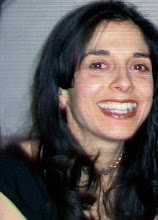Although I usually write here about doing Pilates, this time I would like to share some lessons learned when I gave up Pilates for seven months and didn't get out of bed for three of them.
I felt very fortunate when I got pregnant without any trouble at age 41, but very early in the pregnancy I had some episodes of bleeding and my doctor told me to stop exercising. Then, at 17 weeks things took a more dramatic turn. My amniotic sac ruptured after a routine amniocentesis. This is the dreaded rare but possible risk of an amnio. I was given the option to either terminate or go on bed rest for the rest of the pregnancy with a 10 percent chance of making it to 24 weeks and a 5 percent chance of getting much further.
I thought a lot about exercise while I was lying still on bed rest. I got two new fitness certifications online and watched a lot of videos of other people exercising for my own education during that time. I had time to think about why I love exercising and teaching exercise. I came to realize that Pilates can be like moving meditation. You have to stay in the moment. You have to focus. You are working on yourself, improving your well-being, while being completely in tune with your body. You are aware, awake and determined to improve your physical state. Most exercise is fun and beneficial but there is another level of mental discipline required to actually change your body. Whether it be for aesthetic purposes or to fix a health related problem like a bad back, Pilates is capable of transforming you but you need to show up over and over and be present with it.
I approached my time in bed with the same determination and vigor that I would a transformative exercise program. I just happen to be lying still. I learned that as long as the goal is seductive enough, we humans are able to suffer through a great deal of discomfort. My favorite Pilates teacher, Alycea Ungaro, (http://www.realpilatesnyc.com) used to yell out during class, "exercise is not comfortable." No it is not. Nor is lying in bed 24 hours a day in almost the exact same position. However, if you want something badly enough you can do it and it will be worth it. On bed rest, I felt as though I was actively still, hunkered down in my bed, determined to beat the odds. I saw each day that passed without going into labor as a huge accomplishment.
Believing and trusting that the discomfort will pay off is key to enduring it. Of course there were many times I lay awake at night wondering about the outcome of the pregnancy and losing hope in my mission. But the most important thing I found was to stay in each moment and not look too far ahead. This is true with exercise as well. Be present, show up consistently and do the work. You have to have a goal for the outcome but since results can take so much time, you cannot get overwhelmed with the goal. The old saying, "you can't take your temperature every five minutes" applies here. You have to be in it for the long haul.
My story has a very happy ending. I made it to 29 weeks and I now have a beautiful baby boy. I was extremely lucky. This story could have ended very differently. But you have to show up to be lucky. You have to put in the work and be ready for luck to come along. This is true whether you are exercising or laying still. Stay focused on what you want to the outcome to be and then work towards that goal moment to moment. Ask yourself how much your goal means to you. Because if it means enough you will be amazed at what you can do.
